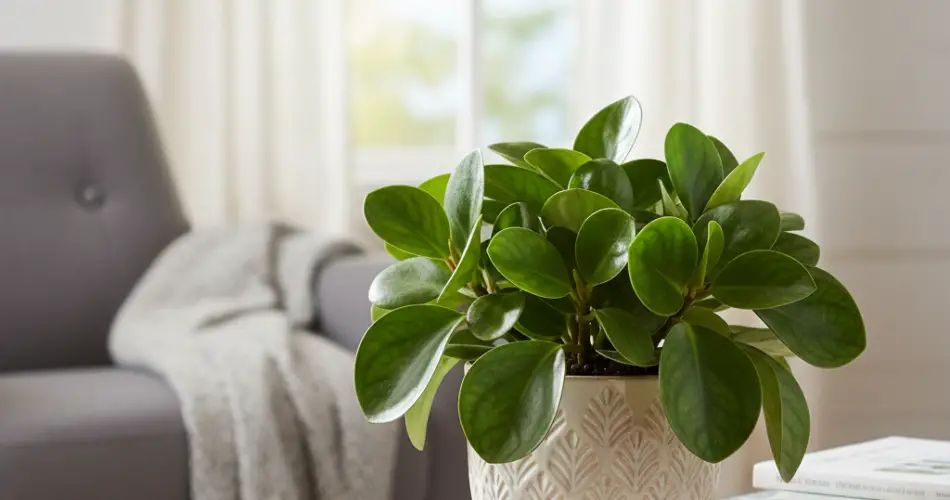Peperomia plants are popular indoor houseplants, admired for their compact size, attractive foliage, and low-maintenance care. With over 1,000 varieties ranging from glossy green leaves to patterned or textured foliage, Peperomias make excellent additions to homes, offices, and apartments. While they are relatively forgiving plants, understanding their sunlight needs is crucial to ensure they thrive indoors. Light affects growth, leaf coloration, and overall health, so knowing how much sunlight a Peperomia plant requires can help maintain its beauty year-round.
Understanding Peperomia Light Requirements
Native to tropical and subtropical regions of Central and South America, Peperomia plants typically grow under the canopy of larger plants or trees. This natural environment exposes them to bright but indirect light, shielding them from direct sunlight that could scorch their delicate leaves. In indoor settings, replicating these filtered-light conditions is essential. Peperomias are adaptable and can tolerate a range of light conditions, but the ideal scenario is consistent, moderate indirect light that allows the plant to flourish without causing stress.
Ideal Sunlight for Indoor Peperomia Plants
Peperomia plants thrive in bright, indirect light, making them suitable for many indoor locations. An east-facing window is ideal because it provides gentle morning sunlight that won’t burn the leaves. South- or west-facing windows can work as well, but a sheer curtain may be needed to diffuse the stronger afternoon rays. Although Peperomias can survive in low-light conditions, prolonged dim lighting may slow growth, reduce leaf vibrancy, and cause the plant to become leggy as it stretches toward a light source.
Signs of Too Much Sunlight
Excessive sunlight is a common issue for Peperomia plants. Too much direct sun can cause leaf scorch, browning edges, yellowing, and curling foliage. Prolonged exposure to strong sunlight can weaken the plant and inhibit growth. If you notice these symptoms, it is important to move the plant to a location with filtered or indirect light, or use a sheer curtain to protect it from harsh rays.
Signs of Too Little Sunlight
While Peperomia plants tolerate lower light levels, inadequate sunlight can slow growth and affect leaf appearance. In low-light conditions, leaves may become smaller, paler, or lose their characteristic color patterns. Vines or stems may elongate unnaturally as the plant reaches for available light. Although Peperomia plants can survive in dim areas, moderate indirect light ensures fuller, healthier growth and maintains vibrant foliage patterns.
Balancing Light with Other Care Requirements
Light alone is not enough for healthy Peperomia growth. These plants also require well-draining soil, moderate watering, and adequate humidity. Overwatering in low-light conditions can lead to root rot, while excessive sunlight combined with dry air can cause leaf damage. Ensuring a balance of light, water, and humidity promotes strong, lush growth and long-term plant health.
Using Artificial Light Indoors
In indoor spaces with limited natural light, Peperomia plants respond well to fluorescent or LED grow lights. Position the light about 12–18 inches above the plant and provide 12–14 hours of light daily to simulate natural daylight. This is especially helpful in rooms with minimal window access or during winter months when daylight is limited. Artificial lighting helps maintain vibrant foliage and encourages steady growth.
Monitoring and Adjusting Your Peperomia
Regular observation is key to maintaining a healthy Peperomia. Watch for signs such as yellowing, browning, or stretching stems, which indicate a need for light adjustment. Rotating the plant occasionally ensures all sides receive equal light, preventing lopsided growth and promoting a balanced, attractive appearance.
Choosing the Right Indoor Location
Optimal indoor locations for Peperomia plants include:
-
Near east-facing windows with gentle morning sunlight.
-
Near south- or west-facing windows with filtered light.
-
Bright rooms with indirect light from multiple directions.
Avoid placing Peperomia plants in direct, harsh sunlight or near heaters, air conditioners, or drafty areas, as these conditions can damage leaves and stress the plant.
Conclusion
Peperomia plants are versatile, low-maintenance indoor plants that thrive in bright, indirect sunlight. Too much direct sun can scorch leaves, while too little light can slow growth and reduce foliage vibrancy. By positioning your plant in the right light, supplementing with artificial lighting when necessary, and balancing light with proper watering and humidity, you can enjoy a thriving, vibrant Peperomia indoors. With their compact size, attractive leaves, and ease of care, Peperomia plants bring a touch of tropical charm and greenery to any indoor space.



